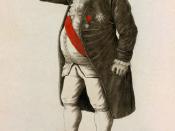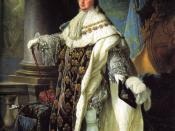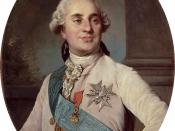The major cause of the 10-year French Revolution (1789-1799) was due to disputes between the social classes in France at the time. The authority of kings, priests, and nobles were questioned. During King Louis XVIÃÂs reign in the 1780ÃÂs, an exorbitant amount of money was borrowed to pay for King LouisÃÂs wars and to keep French power strong in Europe. This caused increased national debt.
The different classes in France were made up of what they called three different Orders where legally developed from birth. The first Order was the church. The church paid little or no taxes, but collected tithes and monies from the other Orders. In addition to owning approximately ten percent of the land in France, the church was equal in social, economic, and spiritual power. The second Order was made of the nobility. They were by far the richest of all three Orders. The nobility paid very little taxes and enjoyed tremendous rights and privileges.
They owned much land and shared beliefs with the church. The third Order consisted of three entities within itself: 1) The bourgeoisie which was primarily professionals such as doctors, lawyers, merchants, etc., 2) The peasants (also known as commoners), which were the largest of the third Order. The commoners were forced to pay high taxes, tithes to the church, and rents to the nobility who owned the land they lived on, and lastly, 3) the servants, which included apprentices, and household maids, etc. All three Orders had their own disputes.
Another major factor leading to the French Revolution was due to natural causes which lead to additional economic strife. Poor farm harvests due to the weather and ancient trade ordinances that were still in place made the trades market difficult.
Under the Old Regime in France, the king was the...



Good Essay
This essay is quite a good read and I found it both useful and interesting. Minor grammatical errors do not detract from the essay.
1 out of 1 people found this comment useful.